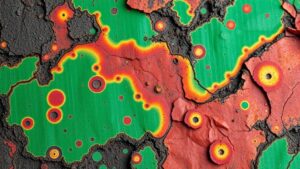The History of Silver Extraction in Ancient Mesoamerican Cultures
The History of Silver Extraction in Ancient Mesoamerican Cultures
Silver has played a significant role in the economies and cultures of ancient civilizations, and its extraction in Mesoamerica is particularly noteworthy. This article explores the techniques, societal implications, and historical context of silver extraction in the region, focusing primarily on the cultures that flourished in Mesoamerica prior to the arrival of Europeans.
Overview of Mesoamerican Civilizations
Mesoamerica, which encompasses present-day Mexico and parts of Central America, was home to several advanced civilizations, including the Olmec, Maya, and Aztec. These cultures are known for their achievements in agriculture, architecture, and art but also for their resource management practices, including the extraction of precious metals.
Early Techniques of Silver Processing
Unlike gold, which was highly valued and widely used as a form of currency and adornment, silver had a more utilitarian role in ancient Mesoamerican cultures. extraction of silver first involved identifying and mining suitable ores, typically found in mountainous regions. Techniques varied among different cultures but often included:
- Surface mining of silver-rich deposits
- Use of simple hand tools for digging and breaking ore
Following the extraction, the ores were subjected to a variety of smelting techniques. Simple furnace designs were common, where charcoal or organic materials were used to heat the ore and extract silver from its sulfide or native forms.
The Aztec and Silver
The Aztec Empire, which reached its height in the early 16th century, is often credited with some of the most innovative methods of silver extraction and processing. Aztecs primarily sourced silver from veins found in the highlands and utilized labor-intensive methods to extract it. After mining, they employed the calcinación technique–a process that involved heating the ore to drive off sulfur and produce more easily reducible forms of silver.
Instead of coins, silver was commonly crafted into intricate jewelry and ceremonial objects, which reflected both status and craftsmanship. Silver became integral to social systems, wherein wealth could dictate influence and political power.
Impact of European Colonization
The arrival of Europeans in the 16th century transformed silver extraction practices dramatically. After the conquest of the Aztec Empire by Hernán Cortés, Spanish explorers quickly recognized the wealth of Mesoamericas silver mines. They introduced new technologies, such as the amalgamation process using mercury to maximize silver yield from ores.
This period marked the beginning of large-scale mining operations, specifically in places like Zacatecas and Potosí. By the 17th century, Spanish colonies became the worlds leading silver producers, supplying vast amounts–roughly 80% of the global silver–using techniques that are still studied today for their historical significance.
Cultural Significance of Silver in Mesoamerica
The extraction and utilization of silver carried profound cultural implications. For the Aztec and other Mesoamerican societies, silver was sacred and often connected to the spiritual realm. Crafted silver objects played a role in rituals and were used in offerings to gods, symbolizing wealth and prosperity.
Also, the emphasis on silver extraction led to shifts in labor dynamics. Entire communities were often mobilized to work in mines, affecting social structures and hierarchies as well as leading to conflicts over labor rights, often exacerbated by colonial practices.
Modern Legacy
Today, the legacy of silver extraction in ancient Mesoamerican cultures continues to be of interest both academically and economically. Modern mining techniques often pay homage to traditional methods, with sustainable practices being a priority in regions historically rich in silver deposits. The historical context of these practices provides valuable insights into resources management and the cultural significance of materials in ancient societies.
Conclusion
The history of silver extraction in ancient Mesoamerican cultures presents a fascinating narrative of ingenuity, adaptation, and cultural importance. The techniques developed over millennia not only laid the groundwork for modern mining practices but also highlight the socio-political issues unique to each civilizations relationship with this precious metal. Understanding this history offers essential lessons on sustainability, resource management, and cultural heritage that resonate even in contemporary society.



